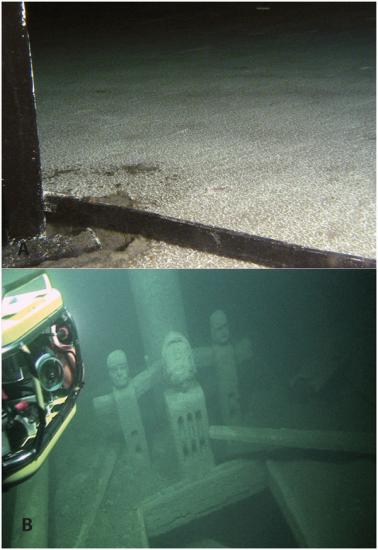Sulfur and iron accumulation in three marine-archaeological shipwrecks in the Baltic Sea: The Ghost, the Crown and the Sword
Yvonne Fors, Håkan Grudd, Anders Rindby, Farideh Jalilehvand, Magnus Sandström, Ingemar Cato, Lennart Bornmalm
Source - http://www.nature.com/srep/2014/140227/srep04222/full/srep04222.html
Abstract
Sulfur and iron concentrations in wood from three 17th century shipwrecks in the Baltic Sea, the Ghost wreck, the Crown and the Sword, were obtained by X-ray fluorescence (XRF) scanning. In near anaerobic environments symbiotic microorganisms degrade waterlogged wood, reduce sulfate and promote accumulation of low-valent sulfur compounds, as previously found for the famous wrecks of the Vasa and Mary Rose. Sulfur K-edge X-ray absorption near-edge structure (XANES) analyses of Ghost wreck wood show that organic thiols and disulfides dominate, together with elemental sulfur probably generated by sulfur-oxidizing Beggiatoa bacteria. Iron sulfides were not detected, consistent with the relatively low iron concentration in the wood. In a museum climate with high atmospheric humidity oxidation processes, especially of iron sulfides formed in the presence of corroding iron, may induce post-conservation wood degradation. Subject to more general confirmation by further analyses no severe conservation concerns are expected for the Ghost wreck wood.

Photo A: Geological Survey of Sweden©. (A) The sulfur-oxidizing bacteria Beggiatoa is an indicator of strongly reduced (anoxic) seabed conditions in this accumulation area of fine-grained sediment (clay) in the central Baltic Sea. Photo B: Deep Sea Productions©. (B) The upper deck of the Ghost wreck (dated to 1630–1650) covered with a white coating.